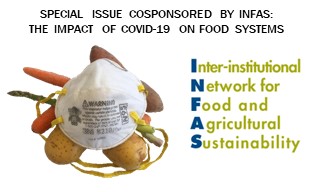Dedication, innovation, and collaboration
A mixed-methods analysis of school meals in Connecticut during COVID-19
DOI:
https://doi.org/10.5304/jafscd.2021.102.020
Keywords:
COVID-19, Pandemic, Emergency Meal Programs, School Meals, School Food Services, School Nutrition Programs, Community CollaborationAbstract
When school buildings across the U.S. closed in March 2020 due to the COVID-19 pandemic, many school districts mobilized to establish emergency school meal programs to operate outside the setting of school cafeterias. The aim of this convergent mixed-methods study is to (a) examine the structure and rates of participation in the spring 2020 meal programs in Connecticut, and (b) obtain insight about the challenges, strategies used, and lessons learned during this time by food service leaders. We obtained quantitative data from the Connecticut State Department of Education and district websites, and qualitative data from nine one-hour interviews with school food service leaders. Although the National School Lunch Program provides meals at standard price, reduced-price, or no cost based on student household income, all emergency meals during spring 2020 were provided at no cost following the school closures resulting from the COVID-19 public health emergency declaration. The average number of meals distributed from March to May 2020 was significantly lower than the overall participation rates (i.e., paid, free, and reduced-price meals combined) prior to COVID-19. However, participation rates in April and May 2020 approached those of free and reduced-price meal participation a year earlier. Four key action themes emerged from the interviews: (1) tailor the program to community needs and resources; (2) identify strategies to facilitate participation; (3) develop partnerships to coordinate school, municipal, and community efforts; and (4) establish programs that encourage resiliency. The interviewees also saw this event as an opportunity to improve the perception of school meals. Innovations developed during the spring 2020 school building closures provide a road map for best practices for the 2020–2021 school year and beyond.
Metrics

Downloads
Published
How to Cite
Issue
Section
Categories
License
Copyright (c) 2021 Katherine Connolly , Molly Babbin, Sarah McKee, Kevin McGinn, Juliana Cohen, Sandra Chafouleas, Marlene Schwartz

This work is licensed under a Creative Commons Attribution 4.0 International License.
The copyright to all content published in JAFSCD belongs to the author(s). It is licensed as CC BY 4.0. This license determines how you may reprint, copy, distribute, or otherwise share JAFSCD content.













